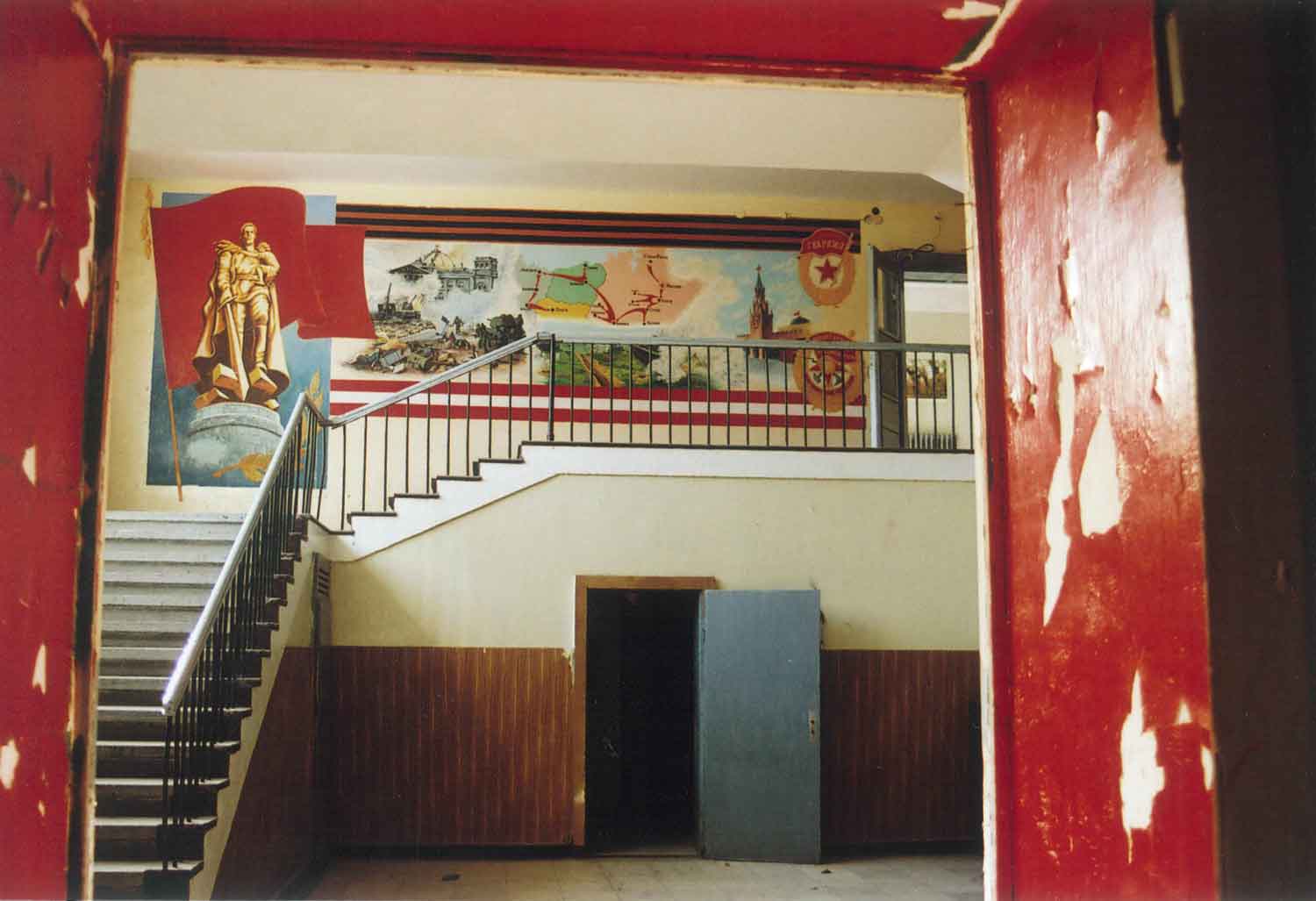Life in and next to the Soviet barracks
The soldiers serving in Hellerau came from all over the Soviet Union and completed their military service here. Silent witnesses to their presence were later found in the form of countless inscriptions carved into the walls – periods of service, names and places of origin. Many senior officers had longer temporary contracts, which is why their families also lived in the barracks, but in a carefully guarded Soviet microcosm. Contact between the locals and military personnel was otherwise undesirable and only possible on an official level within the framework of the ideologically prescribed German-Soviet friendship.

West staircase hall, 1996.
© Elly Brose-Eiermann.
Soldiers during the Cold War
The soldiers serving in Hellerau came from all over the Soviet Union and completed their military service here. Sealed off from the outside world, they were sworn in for the military crisis that was to be expected at all times during the Cold War. The soldiers had virtually no rights, there was no privacy. The relationship between the different cohorts was hierarchical and not infrequently characterised by violence and humiliation; conscripts were only allowed to leave the barracks on orders. They spent their rare free time reading, doing sports or sleeping.
Friends or foes?
Locals and military personnel lived next door to each other and yet in separate worlds. Contact with Germans was internally unwelcome and at most permitted to officers and civilians, but strictly forbidden for soldiers, although it could never be completely avoided because of their close proximity. To this day, the people of Hellerau remember sensational incidents, but many have not forgotten the kindness shown to children by the ordinary soldiers, who were often torn between their longing for social contact and the political school of thought running through their veins, which was based on notorious mistrust.
On an official level, Germans and Soviets met in Hellerau in an expressly friendly manner in accordance with the ideological doctrine of German-Soviet friendship. For example, there were trade-offs between the Hellerau medical battalion and the Dresden Medical Academy as well as a Dresden NVA medical battalion with regular goodwill visits.
Childhood caught between ether and Kalashnikovs
Since senior officers in particular were not infrequently given temporary contracts of three, five or even seven years, their families also constantly lived on the Hellerau barrack grounds. This meant that several dozen children and young people sometimes spent a large part of their childhood and adolescence in Dresden. Although the children had more freedom than the soldiers, they also grew up in a carefully guarded Soviet microcosm in the middle of the GDR. The army’s own school bus stopped every morning in front of the heavily guarded main gate to take them to the primary school in Klotzsche or to the secondary school in the army barracks.
Hidden witnesses
Most of the additions or new buildings erected by the German army and the Soviets have since been demolished, but countless inscriptions on concrete walls and the backs of houses remind us of the presence of Soviet soldiers. This immortalisation, stating the length of service, often also the name and/or home town, was considered a popular ritual when candidates were discharged. Some of them date back to the 1950s. As a result, the remaining walls reveal clues to the scale of the vanished giant empire – from Leningrad to Samarkand.
